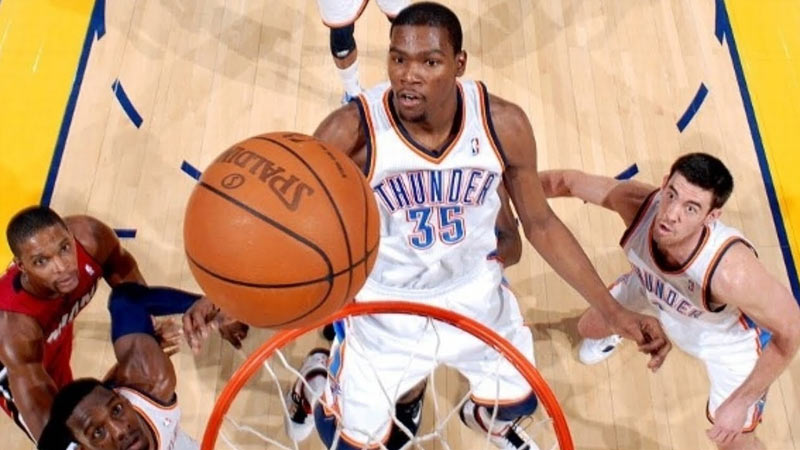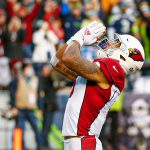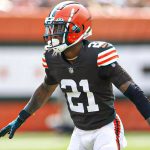Basketball, a sport known for its fast-paced action and high-flying plays, involves numerous rules and regulations that govern the game.
One such rule that often sparks debates and captures the attention of players, coaches, and fans is basket interference.
In this article, we will delve into the intricacies of basket interference in basketball, exploring its different forms, its impact on the game at both the professional and collegiate levels and its historical significance. So, stay focused.
What Is Basket Interference in Basketball?
Basket interference in basketball is a crucial rule that pertains to the interaction between players and the ball when it is on or above the rim.
It encompasses actions that disrupt the natural trajectory of the ball or impede its entry into or exit from the basket.
This violation can occur in both offensive and defensive plays, and its consequences vary depending on which team commits the infraction.
Defensive Basket Interference in Basketball
Defensive basket interference transpires when a defensive player interferes with a shot by touching the ball while it is on or above the rim.
In such instances, the defensive player’s actions hinder the offensive team’s scoring attempt. If defensive basket interference is deemed to have occurred, the offensive team is awarded points for the shot.
This ruling acknowledges that the defensive player’s interference prevented the ball from progressing to its intended destination.
Offensive Basket Interference in Basketball
Conversely, offensive basket interference transpires when an offensive player interferes with the ball while it is on or above the rim.
This violation nullifies the shot attempt, as the offensive player’s interference disrupts the natural course of the ball. In this scenario, the opposing team is awarded possession of the ball.
The rationale behind this ruling is to maintain fairness and prevent offensive players from gaining an unfair advantage by illegally altering the outcome of a shot.
Basket interference rules are in place to ensure that the game is played within the defined parameters and to maintain a level playing field for both teams.
By prohibiting interference with the ball while it is on or above the rim, these rules uphold the integrity of the game and promote fair competition.
Basket Interference in the NBA
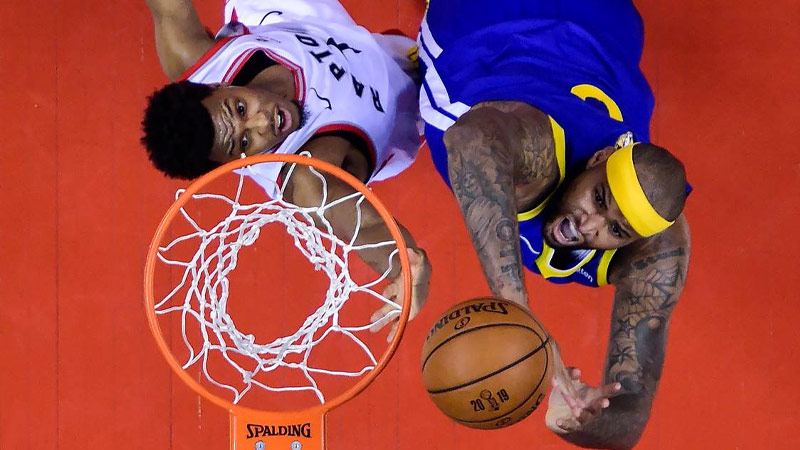
Source: kentucky.com
In the National Basketball Association (NBA), the concept of basket interference is of utmost importance to maintain fairness and uphold the integrity of the game.
This rule is designed to prevent players from interfering with the ball while it is on its downward trajectory toward the basket or while it is resting on the rim.
The NBA has specific guidelines and regulations in place to determine when basket interference occurs and how it is penalized.
Definition of Basket Interference
Basket interference in the NBA is defined as any interference by a player that affects the ball’s flight toward the basket or alters its status while it is on or above the rim.
Examples of basket interference include touching the ball on its downward path above the rim, touching the net or backboard while the ball is on the rim, or causing the basket to vibrate excessively.
Consequences of Basket Interference
If basket interference is called during a live ball situation, it results in a violation and a turnover.
The opposing team is awarded possession of the ball, and play resumes from the designated spot based on the specific situation of the violation.
Basket Interference in the NCAA
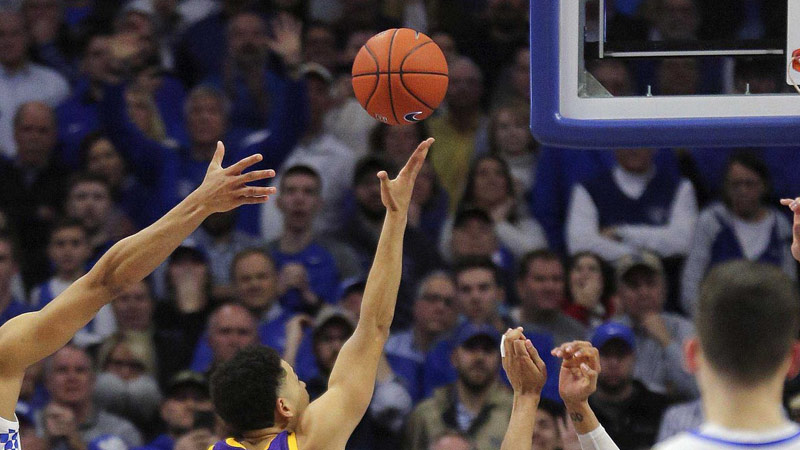
Source: aseaofblue.com
Similar to the NBA, collegiate basketball governed by the National Collegiate Athletic Association (NCAA) also has strict rules regarding basket interference.
The NCAA aims to ensure consistency in the interpretation and enforcement of basket interference across college basketball games.
NCAA’s Definition of Basket Interference
The NCAA defines basket interference as any interference that occurs when a player touches the ball while it is on or above the rim or if a player touches the basket, net, or any part of the goal while the ball is on the rim.
Penalties for Basket Interference
In college basketball, basket interference is penalized by awarding two points to the opposing team if the offense interferes with the ball while it is on the rim and the shot would have otherwise gone in.
If basket interference occurs during a live ball situation, it results in a violation, and the opposing team is given possession of the ball.
Differences from the NBA
While the basic principles of basket interference are similar in the NCAA and NBA, there are slight differences in the interpretation and penalties.
For instance, the NCAA’s rule regarding touching the basket or goal while the ball is on the rim differs from the NBA’s rule, which includes touching the net or backboard as well.
Aftermaths of Basket Interference in Basketball
Basket interference, a violation that occurs when a player interferes with the ball while it is on or within the rim, can have profound consequences in a basketball game.
It disrupts the natural flow of the game and can lead to various outcomes that impact both individual possessions and overall game dynamics.
Let’s delve into some of the aftermaths of basket interference and the significance it holds in the sport.
Shifting Momentum
A basket interference call can significantly shift the momentum of a game. If a defensive player interferes with a shot that was on its way to scoring, it denies the offensive team the opportunity to earn points.
The defensive team gains a boost in morale, while the offensive team may become frustrated or lose confidence. This swing in momentum can have a ripple effect on subsequent possessions and ultimately influence the outcome of the game.
Potential Point Swing
Basket interference can result in a potential point swing, altering the scoreline in favor of one team or the other.
If an offensive player interferes with the ball while it is above the rim and about to go in, the basket is nullified, depriving the offensive team of points.
Conversely, if a defensive player commits basket interference, it grants the offensive team points that they may not have earned otherwise. These swings in points can be pivotal in closely contested games.
Psychological Impact
Basket interference incidents can have a psychological impact on players and teams. For the offensive team, having a shot interfered with can be demoralizing, leading to a loss of confidence in shooting or attacking the rim.
On the other hand, a defensive player who commits basket interference may become cautious or hesitant in their defensive actions, fearing potential violations and becoming less effective in guarding the basket.
Such psychological effects can shape the dynamics of the game and influence player performance.
Official Interpretation
Correctly interpreting basket interference incidents is crucial for players, coaches, and officials in maintaining fair competition. Officials play a pivotal role in making timely and accurate calls when it comes to basket interference.
Their judgment determines whether a violation has occurred, and their decisions can impact the game’s outcome.
Consistency and clear communication regarding the interpretation of basket interference rules are essential to ensure a level playing field for all teams.
Historical Significance of Basket Interference in Basketball
Basket interference, a rule that prohibits players from interfering with the ball while it is on or above the rim, has played a significant role in shaping the game of basketball.
Throughout its history, the interpretation and enforcement of this rule have undergone changes to adapt to the evolving nature of the sport.
By delving into the historical context of basket interference, we can better understand the development of basketball and the impact this rule has had on gameplay strategies.
Early Origins and Development
Basket interference can be traced back to the early days of basketball when the game was still being refined.
In the early 1900s, as basketball gained popularity, the rule was established to maintain fair play and prevent players from illegally interfering with the ball as it approached the basket.
The initial intent was to ensure that shots had a fair chance of being scored without undue interference.
Heightened Enforcement and Rule Evolution
In the early years, the enforcement of basket interference was relatively lax, with officials having limited tools to make accurate judgments. However, as the game progressed and athleticism increased, the need for stricter enforcement became evident.
This led to modifications in the interpretation of the rule to address emerging challenges, such as players hanging on the rim, swatting the ball away, or goaltending.
The Introduction of Goaltending
Goaltending, a concept closely related to basket interference, was introduced to further clarify the rule.
Goaltending occurs when a defensive player interferes with a shot while it is in its downward trajectory toward the basket, whether it has a chance of going in or not. This addition aimed to protect the offensive player’s scoring opportunity and maintain fairness in the game.
Technological Advancements and Rule Refinements
As technology advanced, the game of basketball saw the introduction of instant replay and video review systems. These tools have allowed officials to review close calls and make more accurate determinations regarding basket interference.
The use of technology has contributed to more consistent and fair enforcement of the rule, reducing controversies and improving the integrity of the game.
Impact on Gameplay Strategies
The existence of the basket interference rule has influenced offensive and defensive strategies in basketball.
Offensively, players are encouraged to attack the basket aggressively, relying on their skills to finish plays without interference.
Defensively, teams strategize to protect the rim, using shot-blocking and defensive positioning techniques to prevent opponents from scoring easily.
FAQs
What is the difference between goaltending and basket interference?
Goaltending occurs when a defensive player touches the ball while it is in the downward flight toward the basket, whereas basket interference involves interference by either an offensive or defensive player on or above the rim.
Can a player touch the ball after it has touched the backboard?
Yes, players can touch the ball after it has touched the backboard, as long as it is not on or above the rim. Once the ball is on or above the rim, interference can occur.
Does basket interference always result in a violation?
Yes, basket interference is always considered a violation in basketball. The specific consequences vary based on whether it is defensive or offensive interference.
Can a player hang on the rim without committing basket interference?
Yes, players are allowed to hang on the rim after a dunk or to prevent injury. However, if a player’s action interferes with the ball or play, it may be deemed basket interference.
Can basket interference be reviewed through instant replay?
Yes, in many basketball leagues, including the NBA, basket interference incidents can be reviewed through instant replay to ensure accurate decisions.
Bottom Line
Basket interference is a rule in basketball that plays a crucial role in maintaining fair play and upholding the integrity of the game.
Whether it is defensive or offensive interference, understanding the intricacies of this violation is essential for players, coaches, officials, and fans alike.
By delving into its forms, implications, and historical context, we gain a deeper appreciation for the impact basket interference has had on the sport of basketball throughout its rich history. Thank you for your support.

